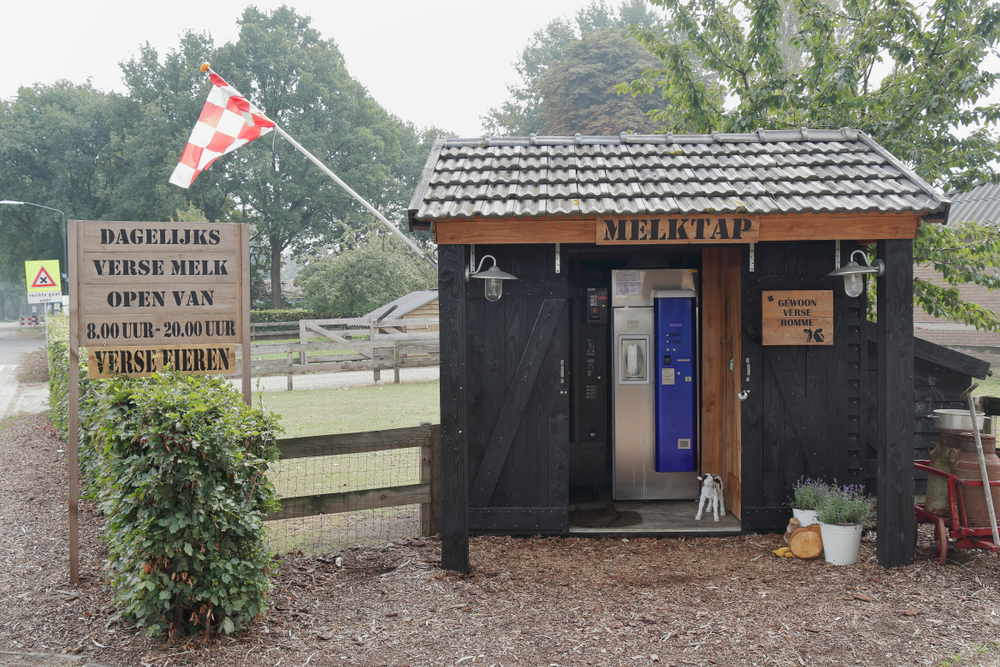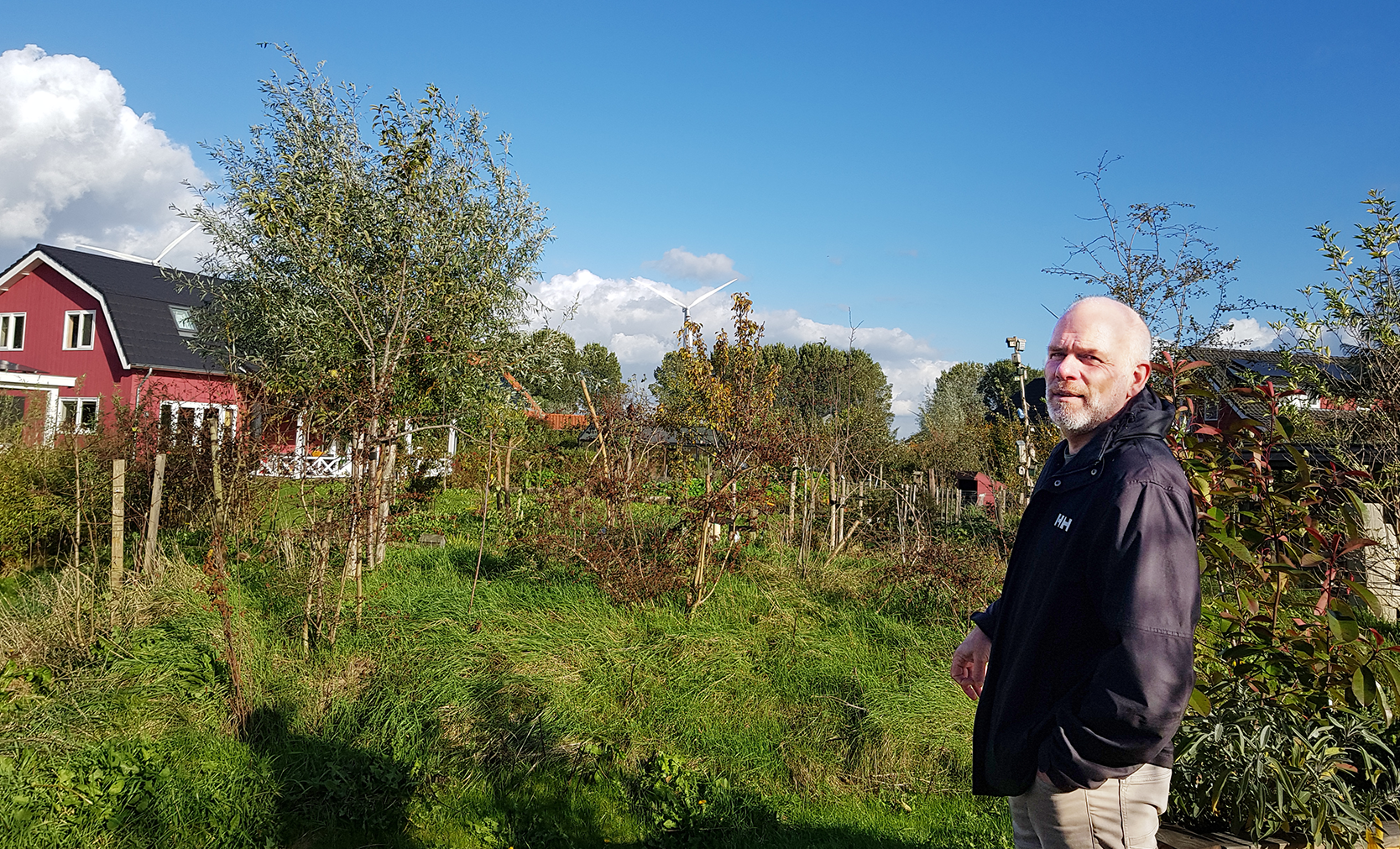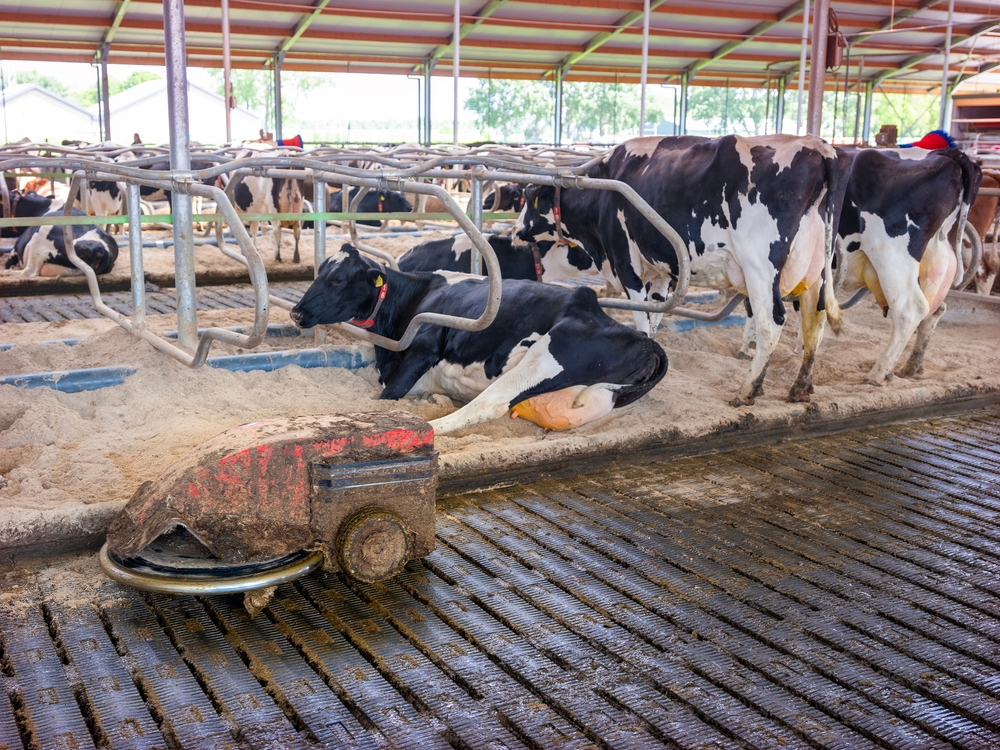Some dairy farmers favour technological innovations as the best way to reduce emissions of ammonia and methane. But great strides can be taken just with feed and management measures. As has been demonstrated by the 108 farmers participating in the Netwerk Praktijkbedrijven, a network of experimental farms jointly established by WUR and LTO Noord. Resource visited one of the farmers.
In the sun-drenched meadow in the Rondehoep polder near Ouderkerk aan de Amstel, dairy farmer Richard Korrel’s herd of cows lie chewing the cud contentedly. ‘Every day the cows can be out of doors is a bonus, but if it gets too wet later on, we will bring them in,’ Korrel says. ‘Otherwise they trample the field to bits.’
The meadow is an important factor in Korrel’s efforts to reduce his emissions. By mowing at the right time of year, he can control the protein content of the grass. ‘I can reduce nitrogen emissions that way. Because what doesn’t go in, doesn’t come out either. If there is less protein in the feed then the manure contains less ammonia, a nitrogen compound. That’s how I can reduce my nitrogen emissions.’ Korrel also puts his 140 dairy cows and 60 young cattle out to grass as much as possible. ‘Out in the meadow, cows don’t pee and poo in the same place and so no ammonia can be created by the mixing of the two, which reduces nitrogen emissions. And the cows eat more fresh grass, which is good for reducing methane emissions too.’
With these and other measures such as cutting down on fertilizer and diluting the manure he spreads on the fields with water, Korrel has already managed to reduce his farm’s ammonia emissions by more than 30 per cent. A further 20 per cent was achieved with his modified barn with an insulated roof and low-emission floor. But he still signed up as a participant for the experimental farm network, a partnership between Wageningen University and LTO Noord. ‘I’m dealing with nitrogen quite successfully, but reducing methane emissions is a lot harder on my farm because I farm on peat soil. That means I can’t grow maize for my cows, and maize reduces methane emissions. So through the network, I hope to learn from experts and from other people’s experience.’
Environment and bank balance
‘Methane emissions are natural for cows,’ says WUR researcher Gerard Migchels. ‘When they digest grass and other food, methane is produced through the cows’ burps and the manure. We try to reduce those methane emissions by managing their diet.’ So the farm network’s goal is to reduce not only nitrogen emissions but also methane emissions by 30 per cent by 2024.
Migchels leads the network, together with Cathy van Dijk of LTO Noord. Wageningen provides the experts on things like grassland management, barns and fodder, while LTO takes care of the knowledge transfer and support. The Ministry of Agriculture, Nature and Food Quality (LNV) is funding the project, in which 108 dairy farmers are participating. The participants make use of what has been learned from previous projects, Proeftuin Natura 2000 and Proeftuin Veenweiden, in the Natura 2000 areas and peatland areas respectively. Migchels: ‘In those projects, we learned a lot about how to reduce nitrogen emissions. Participants in those projects managed to cut nitrogen emissions by as much as 20 to 40 per cent.
Outdoors, cows eat fresh grass, which is good for methane emissions
Knowing that society will expect more from farmers in the coming years in terms of climate, water, biodiversity and animal welfare, we are adopting an integral approach in this project, looking at nitrate, biodiversity and animal welfare as well as ammonia and methane.’
‘We are looking for solutions that are both practical and affordable,’ adds Cathy van Dijk of LTO Noord. ‘Both the environment and the dairy farmer’s bank balance must benefit. This means that we don’t concentrate on expensive technology such as barns with underfloor suction that mops up the emissions caught beneath the gratings in the barn. The market will run with those technological innovations. We focus on feed and management measures. There is much to be gained just through them.’
Clash
But the integrated approach can cause a clash between sustainable goals, in the experience of dairy farmer Korrel. Of the 80 hectares of pasture near Amsterdam that he manages with his father Gerard, he leaves 23 hectares alone for field birds until early June. ‘To avoid disturbing the breeding field birds, we let the grass grow longer in spring, but that makes it coarser. That means the cow has to chew the cud for longer to digest it, and then more methane is released.’
Every three months, Korrel gets together with the network coordinator and the feed consultant to discuss such obstacles. There are also networking days at which participants can exchange experiences. Korrel’s farm is one of 22 demonstration farms that are participating in the project.
We are looking for solutions that are both practical and affordable
Cathy van Dijk: ‘The group is divided into research farms, demonstration farms and ambassador farms. New measures are first tested on the 18 research farms for feasibility and user-friendliness. These measures are then further tested and fine-tuned on the 22 demonstration farms. The output from that is then tested at the 68 ambassador farms.’
To monitor the results of the measures, sensors take measurements on and around the stables. Farms also use a digital nutrient accounting system, the Kringloopwijzer, which keeps track of their environmental and climate performance. ‘For some organic members of the network, that was a new tool,’ says Van Dijk. ‘Diversity is important to us. It doesn’t matter whether a farm is large or small, organic or mainstream, on sandy, clay or peaty soil. The reduction of emissions is tailored to suit each farm, which is why we chose the broadest possible group of participants, including farms with little experience of such projects.’
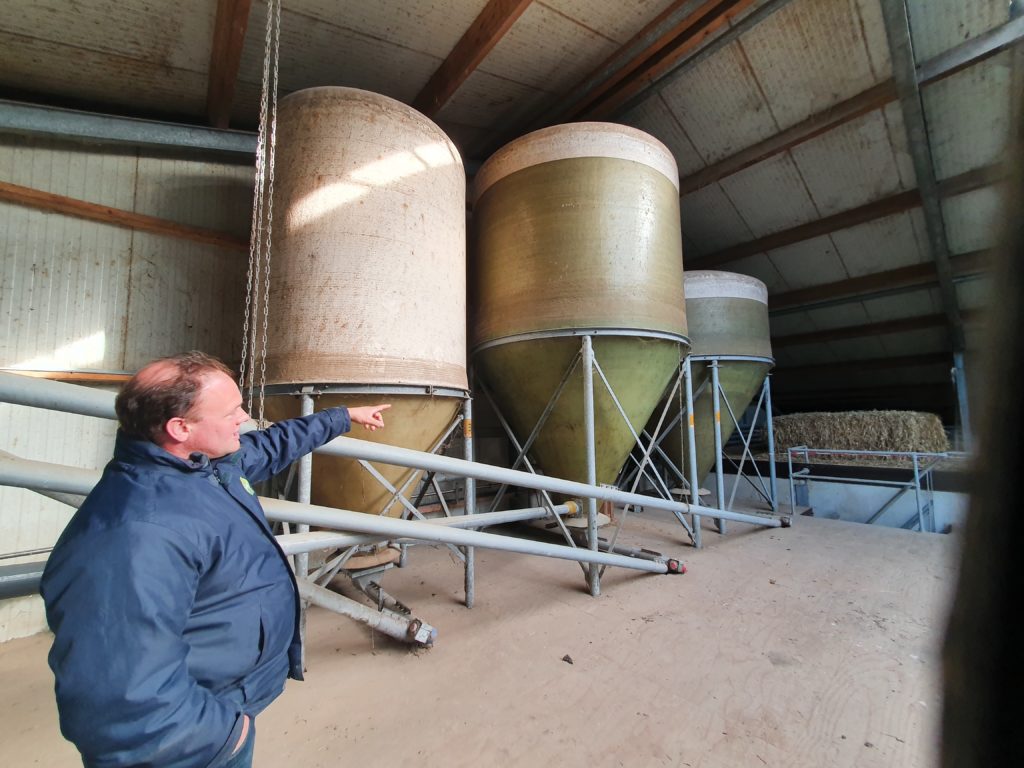
Hope
Gerard Migchels: ‘We had around 30 participants in mind for this trial when we started, but we got over 150 responses to our call. So we decided to expand the number of participants.’ This enthusiasm came as a surprise to Migchels, especially in view of the unrest in the sector caused by the nitrogen measures looming over it.
Through the network, I hope to learn from experts and from other people’s experience
‘At one of our network meetings, a woman farmer came up to me and said: “The perception now is that only way to reduce nitrogen emissions is to stop farming, but you are giving us hope that there are other options.”’
While there are gains to be made with smarter farming, the emission targets cannot be achieved without cutting livestock numbers, says Migchels. ‘For some farms, extensification by reducing the number of cows will be among the strategies for achieving emission reductions, combined with looking for other sources of income.’
Korrel is already working on that, although dairy farming comes first for him. ‘My wife has a background in catering and she came up with the idea of hosting guests on our farm,’ he says, showing a room containing stacked straw bales and picnic tables with pretty red-and-white checked tablecloths. ‘We rent out this space for children’s parties.’ Also on the farm is a meeting room and a bar with a big terrace where day-trippers can drop in for a cup of coffee and a sandwich. Korrel and his family also offer ‘farmer’s golf’ followed by drinks or a barbecue. There are go-karts everywhere for children to play on. ‘People are allowed to go everywhere on the farm, we have no secrets from the outside world.’
These activities bring in a nice bit of extra income, but that was not Korrel’s main motive for opening his farm to the public. ‘So many negative things are said about farming these days, some of which are not true at all. So we think it is important to interact with members of the public and, above all, to show how dairy farming works.’

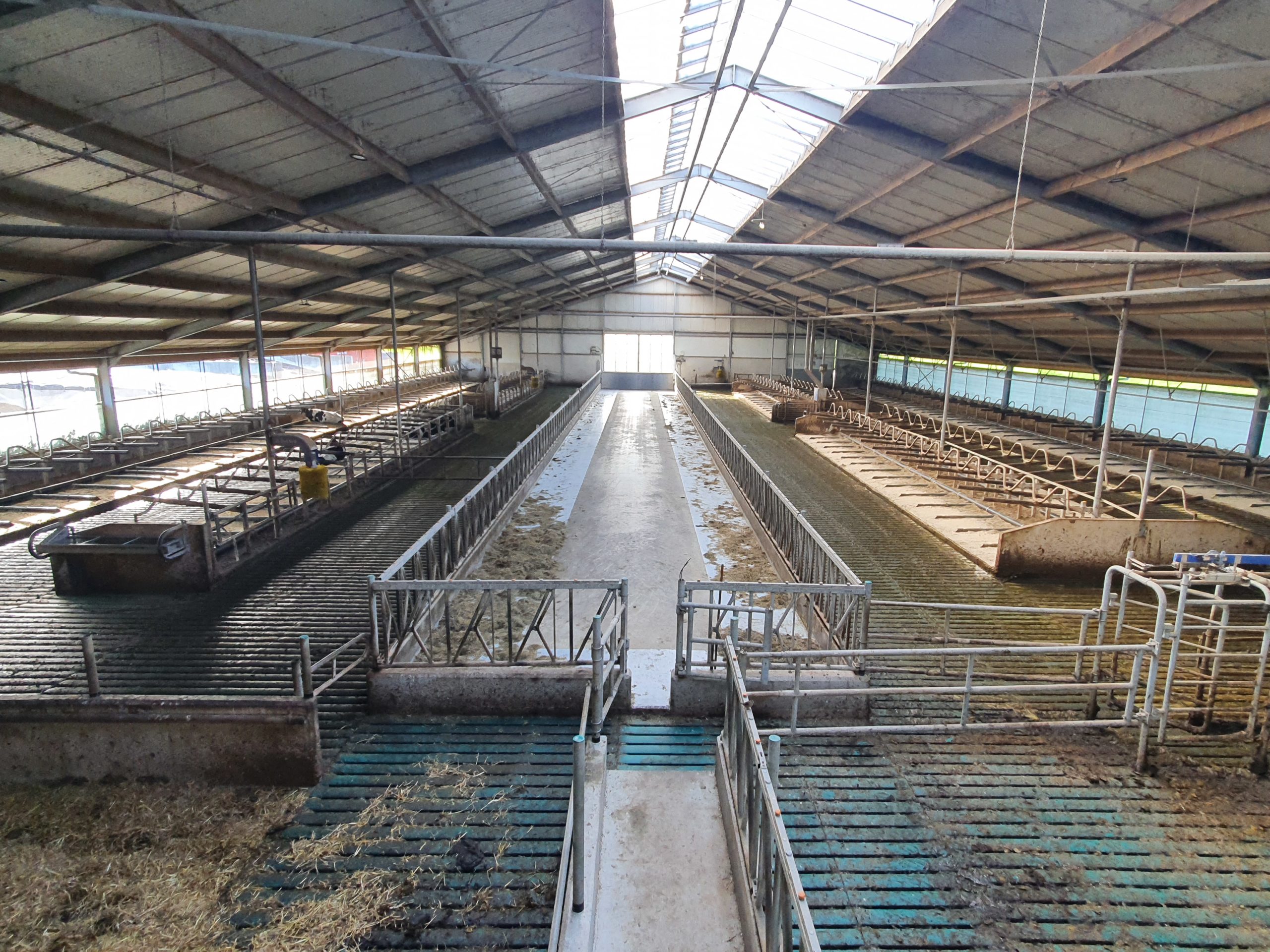 Richard Korrel’s cows are outside as much as possible. ‘In the meadow, cows don’t pee and poo in the same place and so no ammonia can be created by the mixing of the two. This reduces nitrogen emissions.’ Text and photos: Marianne Wilschut
Richard Korrel’s cows are outside as much as possible. ‘In the meadow, cows don’t pee and poo in the same place and so no ammonia can be created by the mixing of the two. This reduces nitrogen emissions.’ Text and photos: Marianne Wilschut 